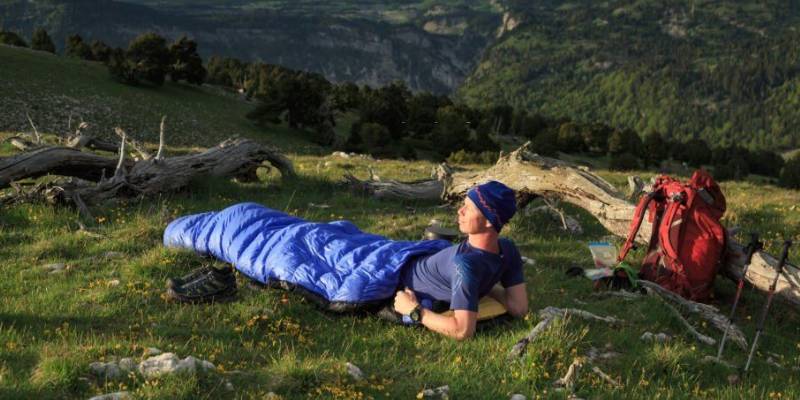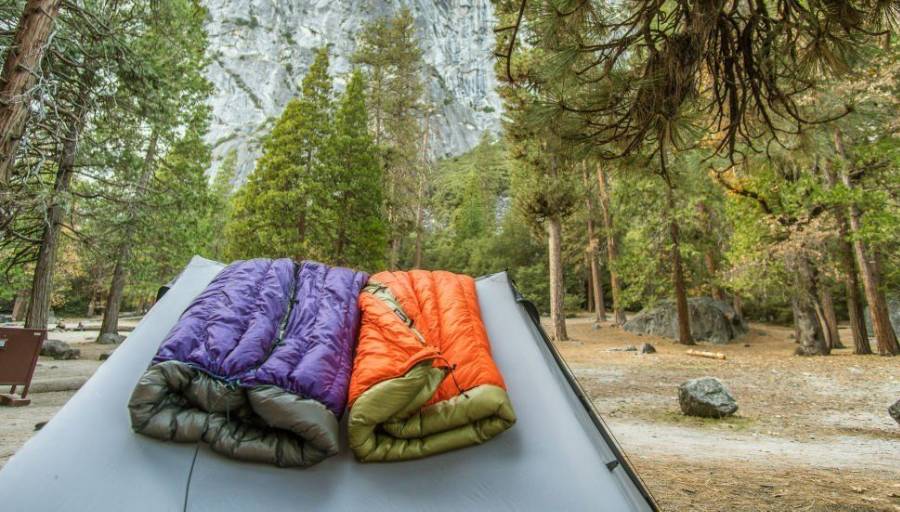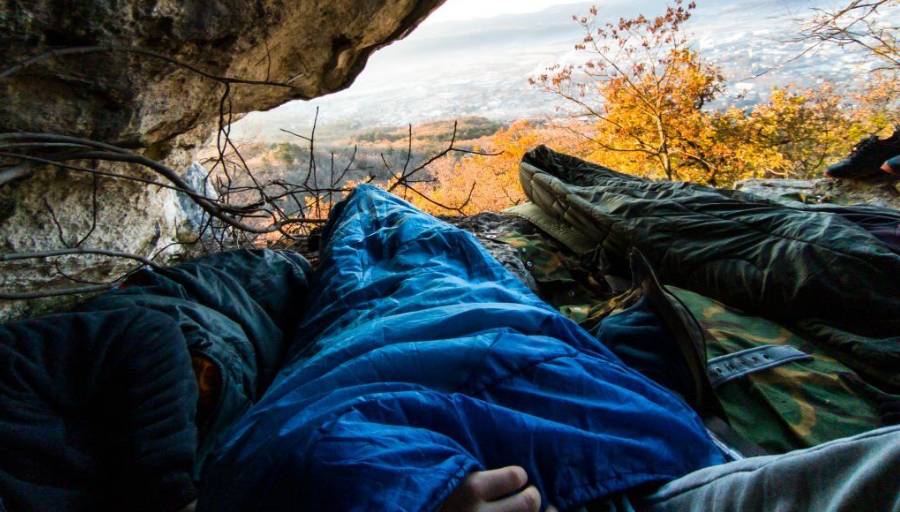How To Attach Sleeping Bag To Backpack

Attaching a sleeping bag to a backpack is a common practice among outdoor enthusiasts and hikers. It allows you to free up space inside your backpack and efficiently carry your sleeping bag during your outdoor adventures.
In this guide, I will provide you with step-by-step instructions on how to attach a sleeping bag to a backpack. By following these steps, you can ensure that your sleeping bag is securely fastened to your backpack, allowing for easy access and efficient weight distribution. Let’s get started!
Attaching Sleeping Bag To Backpack – Step by Step
Certainly! Here is a step-by-step guide on how to attach a sleeping bag to a backpack:
Step 1: Choose the Right Sleeping Bag Compression Sack
Before you begin, make sure you have a compression sack for your sleeping bag. Compression sacks are designed to compact your sleeping bag and make it easier to attach to your backpack. Choose a compression sack that is the appropriate size for your sleeping bag and is made of durable material.
Step 2: Roll Up Your Sleeping Bag
Start by rolling up your sleeping bag tightly. Begin at one end and roll towards the other, making sure to eliminate any air pockets as you go. Rolling your sleeping bag instead of stuffing it will help maintain its shape and make it easier to fit into the compression sack.
Step 3: Insert the Sleeping Bag into the Compression Sack
Once your sleeping bag is rolled up, unzip the compression sack and open it up. Insert the rolled sleeping bag into the compression sack, starting with the foot end. Push the sleeping bag all the way in, making sure it fits snugly.
Step 4: Compress the Sleeping Bag
Now it’s time to compress the sleeping bag. Begin by cinching down the compression straps on the sides of the sack. These straps are usually equipped with buckles or quick-release mechanisms that allow you to tighten them securely. Pull the straps tight, removing any excess air and reducing the overall size of the sleeping bag.
Step 5: Secure the Compression Sack
Once the sleeping bag is compressed, close the compression sack tightly. Ensure that all the buckles, zippers, or drawstrings are properly fastened to prevent the sleeping bag from coming loose while you’re on the move.
Step 6: Locate Attachment Points on Your Backpack
Check your backpack for attachment points specifically designed for carrying gear externally. These attachment points can include webbing loops, daisy chains, or gear loops. The locations of these attachment points may vary depending on the backpack design, so familiarize yourself with your backpack’s features.
Step 7: Attach the Compression Sack to the Backpack
Using carabiners or straps, attach the compression sack containing your sleeping bag to the attachment points on your backpack. Thread the carabiners through the loops or connect the straps securely to the gear loops or daisy chains. Make sure the attachment is tight and secure, as you don’t want your sleeping bag to come loose during your hike.
Step 8: Adjust and Balance the Load
After attaching the sleeping bag to your backpack, take a moment to adjust and balance the load. Ensure that the weight is distributed evenly and doesn’t cause any imbalance or discomfort. Make any necessary adjustments to the straps or attachments to achieve a comfortable fit.
Step 9: Test and Fine-Tune
Before embarking on your outdoor adventure, take a short test walk or hike to ensure that the sleeping bag remains securely attached to your backpack. Pay attention to any movement or shifting of the bag and make further adjustments if needed.
By following these steps, you can securely attach your sleeping bag to your backpack, freeing up space inside and ensuring easy access during your outdoor trips. Remember to consider the weight distribution and balance of your backpack to maintain comfort and stability throughout your journey.
FAQs
Here are some frequently asked questions and their answers regarding attaching a sleeping bag to a backpack:
Can I attach a sleeping bag to any type of backpack?
In general, most backpacks have attachment points or loops that allow you to attach gear externally. However, the availability and design of attachment points may vary between backpack models. It’s a good idea to check your backpack’s features or consult the manufacturer’s instructions to ensure compatibility.
Can I attach my sleeping bag inside my backpack instead?
While it is possible to place your sleeping bag inside your backpack, attaching it externally offers several advantages. Attaching the sleeping bag externally frees up valuable space inside your backpack for other essential items, and it allows for quick and easy access to your sleeping bag without having to unpack your entire backpack.
How do I prevent my sleeping bag from getting wet or dirty when attached to the outside of my backpack?
To protect your sleeping bag from moisture or dirt, consider using a waterproof stuff sack or a rain cover for your backpack. These will help shield your sleeping bag from the elements and maintain its insulation properties. Additionally, choose attachment points on your backpack that are less likely to come into contact with the ground or dirty surfaces.
Can I use other methods besides compression sacks to attach my sleeping bag?
Compression sacks are specifically designed to compress and secure sleeping bags, making them ideal for attachment to backpacks. However, if you don’t have a compression sack, you can use a stuff sack or a dry bag to hold and protect your sleeping bag. Simply attach the stuff sack or dry bag to your backpack using the same attachment points and secure it tightly.
Are there any weight or size limitations for attaching a sleeping bag to a backpack?
It’s important to consider the weight and size of your sleeping bag when attaching it to your backpack. Ensure that the attachment points and straps on your backpack are strong enough to support the weight of your sleeping bag. Additionally, be mindful of the overall bulkiness of the attached sleeping bag to maintain balance and comfort while hiking.
Is it possible to attach other gear or equipment to the outside of my backpack along with the sleeping bag?
Yes, you can attach other gear or equipment to the outside of your backpack, especially if it has multiple attachment points. However, be cautious not to overload your backpack or attach items that may be too large or protrude excessively, as they could affect your balance and mobility.
Remember to always consider the weight distribution, balance, and comfort of your backpack when attaching gear externally. It’s important to test and adjust the attachment points before embarking on your outdoor adventure to ensure a secure and comfortable fit.
Conclusion
Attaching a sleeping bag to your backpack is a practical and efficient way to carry your gear during outdoor adventures. By following the steps outlined in this guide, you can securely attach your sleeping bag to your backpack and free up valuable space inside. Remember to choose a suitable compression sack, roll up your sleeping bag tightly, compress it using the straps on the compression sack, and securely attach the compressed sleeping bag to the attachment points on your backpack. Take the time to balance the load and make any necessary adjustments for a comfortable fit.
By properly attaching your sleeping bag to your backpack, you can ensure easy access, protect your sleeping bag from dirt and moisture, and maintain balance while hiking. Always consider the weight and size of your sleeping bag, as well as the capacity and attachment options of your backpack. By doing so, you’ll be well-prepared for your outdoor adventures, with a securely attached sleeping bag ready for a restful night’s sleep under the stars.
Related Posts:






